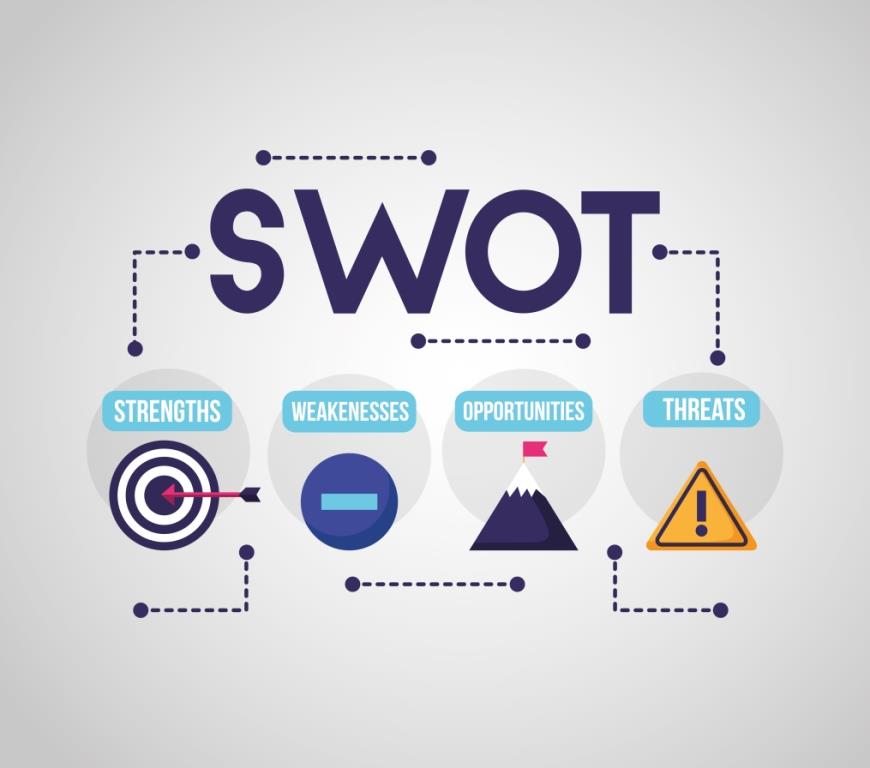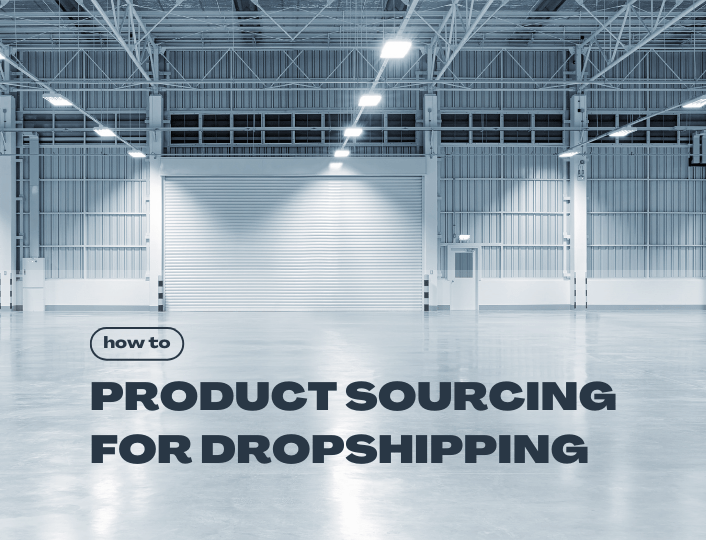Determining how successul your business has been can be a challenge. You’ll need to do periodic assessments to figure out if you’re doing things correctly or need to make some changes. This is why you need to do a SWOT analysis for your Shopify store.
What is a SWOT analysis, exactly? Why should you bother? How do you go about putting one together for your Shopify store? We’ll answer these questions and more in this article. Here’s a glimpse of what you’ll learn:
- What is SWOT analysis?
- Why should you do a SWOT analysis for your Shopify store?
- How to do a SWOT analysis for Shopify
- Practical example of SWOT Analysis
- When should you do a SWOT analysis?
- Tips for a successful SWOT analysis
- Frequently asked questions about SWOT analysis
What Is SWOT Analysis?
SWOT is an acronym for Strength, Weakness, Opportunities, and Threats. It’s often known as situational analysis and is a strategic planning tool for effectively analyzing and keeping your business on track. This tool helps you identify your business strengths, weaknesses, opportunities, and threats.
Conducting a SWOT analysis regularly will help you evaluate the factors that influence the success of your Shopify store and manage your business more efficiently. You’ll also learn about your current performance and how to make improvements for the future.
SWOT Meaning
As stated earlier, SWOT stands for Strengths, Weaknesses, Opportunities, and Threats. The internal factors affecting your business are its Strengths and Weaknesses, while the external factors are the Opportunities and Threats.
The result you get from a SWOT analysis is usually plotted on a SWOT matrix, and a four-quadrant table is used to represent each parameter. Simply put, a SWOT matrix is a table that shows the relationship between the external and internal factors affecting your business.
Strengths
Your company’s strengths are what it excels at – what makes your store successful. These elements determine the success of your company.
A good example of your strength can be good customer relationships. So this means that if you have excellent customer relationships, it’s one of your business’s strengths.
Creativity, unique technology, a devoted client base, passion, attention to duty, consistency, and timely delivery are all strengths a company can have. So, to improve your SWOT analysis, focus on your company’s strengths and attempt to strengthen them.
Weaknesses
Your business’ weaknesses are the elements that will stop your business from progressing. They tend to limit your productivity and lower your customer satisfaction rate. These weaknesses include debts, lack of capital, poor customer service, inadequate supply chain, and a weak balance sheet.
These weaknesses are some of the things that can cause a decline in a business’ success rate.
Opportunities
Opportunities provide you with chances to improve your strengths. They include factors outside your business that allow you to do better and produce better quality products or services. These external factors also give you a competitive advantage over similar businesses.
Threats
Threats are uncontrollable events that can hurt your business’s success. Some of these threats are environmental causes, changes in government policies, liquidation, changes in demand or supply, supply chain issues, and so on. If they are not addressed effectively, they can throw a business off balance.
Why Should You Do a SWOT Analysis for Your Shopify Store?
A SWOT analysis can serve as a road map for your Shopify store. It guides you through overcoming obstacles and achieving your objectives with greater efficiency and speed. It also allows you to set up your business in a way that will boost your Shopify sales.
Here are reasons you should carry out a SWOT on your Shopify store today – if you haven’t:
It helps You Maximize Your Strengths
When you identify your Shopify store strengths, you can know what works and what doesn’t. Certain internal elements like your product type and capital can differentiate your Shopify store from competitors.
Human resources is another area where you should look for strengths. Employees and consumers who contribute to your company’s success are examples of good human resources.
Based on these, below are some strengths you want to maximize:
- Dedicated clientele
- Increased earnings
- Outstanding customer service
- Cost reduction
It Helps You Reduce Weaknesses
Every Shopify store has room for improvement – including yours. So, you need to identify the weaknesses of your Shopify store and convert them to strengths. You can also solve recurring problems this way.
By reducing your weaknesses, you’d be increasing your Shopify store’s competitive advantage. Typical weaknesses you want to reduce include:
- Poor branding
- Recurring loss
- Poor customer relations or bad customer reviews
- High cost of production
It Helps You Recognize and Avoid Threats
Some threats can have a huge negative impact on your Shopify store. The best way to identify and reduce potential threats to your business or avoid them completely is by anticipating them.
SWOT analysis can help you identify and deal with the following threats to your Shopify store:
- Uncertainty in your supply chain
- Demographic changes in customers
- Resource depletion as a result of environmental changes
- Market saturation
It Increases Your Productivity


SWOT analysis can help improve your productivity.
How, you may ask?
For example, a SWOT analysis can help you develop ideas for a new product to sell based on current market trends. This way, you can identify growth prospects that will benefit your Shopify store in the short term and in the future.
It Can Help You Expand Your Business
With the Shopify SWOT analysis, you can plan effective business strategies and give your customers the best services. You also get to build recommendations for the future of your business which will help you expand your reach and be more productive.
How to Do A SWOT Analysis for Shopify
A SWOT analysis is a simple procedure and doesn’t take so much time. However, when you want to do a SWOT analysis, make it as straightforward as possible. This allows you to avoid mistakes and unnecessary confusion.
We’ll discuss these steps shortly.
Steps Involved in Carrying Out a SWOT Analysis
Here are the steps to create a SWOT matrix.
1. Make a Note of What You Want to Achieve
Starting a SWOT analysis without an aim is pointless. So, before setting out to do one, you should have clear objectives. These objectives will serve as a force to make the whole process easier, faster, and more effective.
2. Have a Proper Understanding of Your Business
Learning how your business market works will give you a good perspective of your business. It will also help to make your SWOT analysis easy. You also get to figure out ways of doing better by producing better quality than your competitors.
3. Make a List of Your Business’ Strengths
While making a list of your business’s strengths, some of these questions can guide you:
- How often do you get good reviews?
- Is there sufficient traffic on your website?
- What do you do better than competitors?
- How are your services unique and distinct?
- How well do you make sales?
4. List Out Your Store’s Weaknesses
Knowing your store’s weaknesses will help you create an effective SWOT Matrix. If you can’t figure out these weaknesses, the following questions will help.
The questions below can also help you think of your weaknesses:
- What areas can you improve?
- How can you match other competitors?
- Do you have limited resources?
- Which assets are at your disposal?
- Do you need any data recovery process?
5. Examine Potential Opportunities
Look beyond your business and explore opportunities that can help you do better and make more profit. Opportunities are everywhere, you only have to search for them in the right places.
Asking yourself the following questions will help unravel potential opportunities.
- How can you take advantage of current trends?
- Are there any opportunities at your disposal?
- In what ways can you expand your market?
6. Make a List of Potential Threats
From the example of threats listed earlier, you can think of the ones affecting your business. They are usually unforeseen, so you have to be careful not to make mistakes or miss any.
The questions below can help you assess potential threats to your business:
- How will a hike in the exchange rate affect your business?
- Will there be a decrease in supply at any point?
- How can the weather affect your service delivery?
- Can changes in governmental policies affect your business?
Answering the questions above without bias will help you create a proper SWOT analysis. You can also seek advice from more experienced business owners.
Practical Example of SWOT Analysis
Need some SWOT analysis examples to take inspiration to create yours? We’ve got some.
Here’s a SWOT analysis template you can use.
Strengths
|
Weaknesses
|
Opportunities
|
Threats
|
You can always customize and adapt it to your business needs.
Developing Strategies From Your SWOT Analysis
Once you have done your SWOT analysis, you can use it to create short and long-term strategies for your Shopify store. After all, the true value of this research is in how you use the information to maximize the positive and minimize the bad effects on your company.
But how can you turn your SWOT analysis into actionable plans? Consider your strengths and how you may use them to capitalize on the available opportunities. Then think about how you can apply those same strengths to prevent the threats you have discovered. You can also use the opportunities you identify to create solutions to overcome these threats.
When Should You Do A SWOT Analysis?
Before making any vital decisions about your business, it’s wise to run a SWOT analysis. Doing so will help prevent mistakes or decisions that negatively affect your business.
Consider doing a SWOT analysis when there are changes in your country’s economy, changes in demand, greater competition, and general changes in your business market. However, you don’t have to wait until external market conditions deteriorate. Even if your company is growing rapidly, a SWOT analysis can help you find opportunities to sustain your growth.
The beginning of a new business year is also a great time to conduct a SWOT analysis. It will help you figure out the areas of your business to correct and the ones to improve on. So, you should run a SWOT analysis at least once a year. This can either be at the start of the year or midway.
Tips For A Successful SWOT Analysis
First, decide what you want to achieve with a SWOT analysis, then examine whether it is the ideal tool for reaching your goals.
If you decide that a SWOT analysis is what you need, the following tips will assist you in making the most of it:
Tip #1: Keep it clear and concise
Keep your SWOT clear and concise, and don’t forget to add critical details. If you are listing out strengths, for example, explain why it’s a strength and how it can help you achieve your business objectives.
Tip #2: Priotize
When you have finished your SWOT analysis, prioritize your findings by putting them in order of importance. You can use a scale of preference for this.
Tip #3: Get everyone involved
Try to get feedback about your store from your employees, suppliers, customers, and partners.


Tip #4: Be specific
Apply your SWOT analysis to a specific issue rather than your entire store. For instance, you may conduct a SWOT analysis for a goal you want to attain or a problem you need to tackle. After that, you can run an independent SWOT analysis on each issue and aggregate your findings.
Tip #5: Know where you want your business to be in the future
Consider where your company is now and where it might be in the future, and where you want to be. Also, think about your competition and how your Shopify store stacks up against them.
Frequently Asked Questions About SWOT Analysis for Shopify
What Is the Best Way to Write a SWOT Analysis?
Make a list of questions to answer for each element first because these questions will help you complete your SWOT analysis and make a balanced list.
You can create the SWOT framework as a list, in plain text, or as a four-cell table with quadrants dedicated to each aspect. Create a list of strengths and weaknesses and list the opportunities and threats next.
What Are the Most Common SWOT Analysis Errors?
Below are some of the most common mistakes you want to avoid during your SWOT analysis:
- Making your list lengthy and wordy. Keep your list brief and straightforward.
- Being ambiguous. Avoid ambiguity or vagueness, be explicit.
- Lack of proper planning ahead. It’s easy to come up with good ideas without following them through to completion. Always think about the practical implications of your ideas and be forward-looking.
- Being unrealistic. Don’t make detailed plans for opportunities that don’t yet exist.
Conclusion
A SWOT analysis is an excellent tool for guiding any business owner’s decisions and strategies. It can assist in identifying strengths and weaknesses and forecasting future performance by identifying opportunities and threats. You can use your findings to help you decide or determine the next marketing strategy for your Shopify store.
Remember that you can either conduct a SWOT analysis for your entire business or individual areas like production, customer relations, marketing, or sales.
If you’re looking to increase your sales by turning your Shopify store visitors into paying customers, simply install the Adoric Shopify app to your store and watch your sales increase and your cart abandonment rates drop. Want to give it a try? Get the Adoric Shopify app today.





